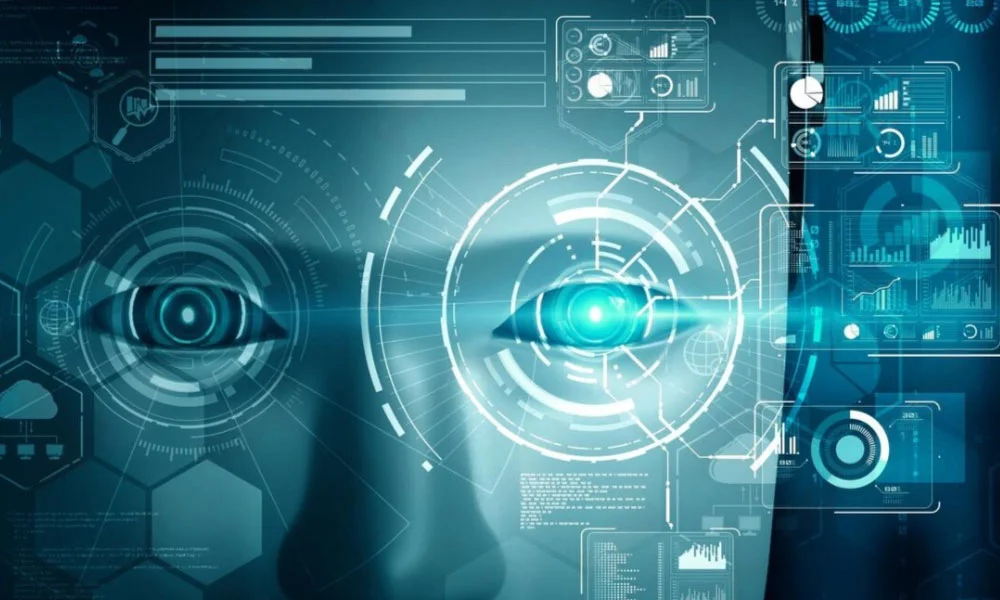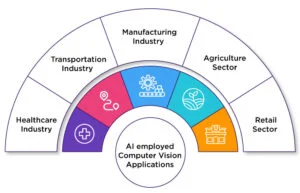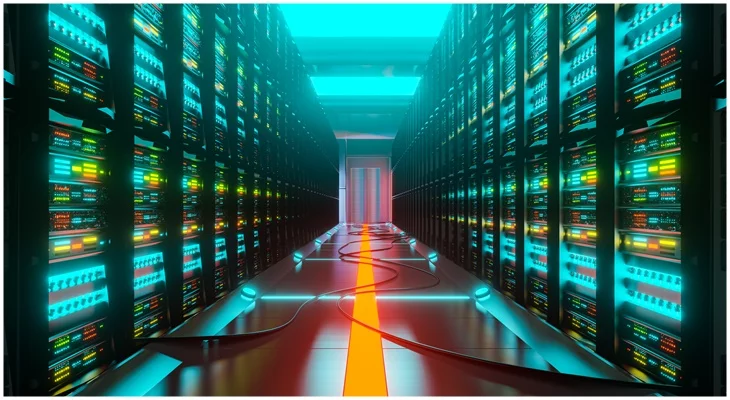Computer vision, a key component of artificial intelligence (AI), is revolutionizing several sectors with its ability to simulate human visuals, evaluating and comprehending images as well as movies. Computer vision has emerged as a major sector of innovation in several domains by utilizing technologies such as machine learning (ML) and deep learning (DL).
AI-powered computer vision applications provide unmatched accuracy, speed, and efficiency for anything from illness diagnosis in healthcare to autonomous vehicle safety. A smarter and more efficient future is being paved by computer vision, which is establishing new standards in automation, productivity, and customer experience as companies continue to explore its potential.
What is Computer Vision?
Computer vision is a branch of artificial intelligence (AI) that employs machine learning (ML) and deep learning (DL) to empower computers to detect, recognize patterns, and evaluate objects in the form of images and videos just like humans do.
Companies may employ computer vision applications to fulfill many goals such as more competitive differentiation in their market, better customer experiences, higher performance, and simpler procedures.
Working Mechanism of Computer Vision
To self-train and grasp visual input, computer vision mostly uses pattern recognition algorithms. The vast accessibility of data and the desire of companies to share them has made it achievable for deep learning experts to use this data to make the procedure more precise and speedier.
When it comes to computer vision applications, deep learning techniques have emerged as a superior alternative to machine learning algorithms. To guarantee the highest level of accuracy, machine learning methods, for example, need a vast amount of data and constant human supervision during the first phase. In contrast, deep learning employs neural networks and examples to solve problems. It learns on its own by identifying recurring patterns in the instances using labeled data.
What are Computer Vision Applications and How is AI employed in Them?
Healthcare Industry
Computer vision improves diagnosis and treatment, saving lives in the medical field. AI-powered devices, for instance, examine X-ray or MRI pictures to identify malignancies, fractures, or tumors early on. For accuracy during intricate procedures, surgeons also employ computer vision applications. Artificial intelligence (AI) applications guarantee quicker diagnosis, lower human error, and increase access to healthcare.
Transportation Industry
Computer vision in transportation guarantees efficiency and safety. Self-driving automobiles, or autonomous vehicles, employ artificial intelligence (AI) to recognize pedestrians, traffic signs, and barriers. It facilitates real-time decision-making for the car. Computer vision is used by traffic management systems to monitor road conditions and regulate traffic flow, which helps to lessen congestion. Additionally, monitoring systems that identify accidents and maintain road safety are powered by this technology.
Manufacturing industry
Computer vision in manufacturing expedites production and guarantees product quality. AI algorithms are quicker than humans at spotting flaws like scratches or incorrect measurements while inspecting items on production lines. Computer vision-powered robots expertly do tasks like assembly and packing. This reduces waste, saves time, and increases output.
Agriculture Sector
Computer vision helps farmers by improving the intelligence of agriculture. AI-enabled drones with cameras can evaluate soil conditions, identify illnesses, and track crop health. By optimizing irrigation and pesticide use, farmers may save money and increase productivity. Additionally, computer vision applications aids in the sorting of fruits and vegetables according to their size, color, and quality, guaranteeing that only the best items make it to market.
Retail Sector
Retailers utilize computer vision to boost operations and improve the consumer experience. AI-powered cameras in retail spaces can monitor consumer activity to manage inventory, improve shelf placements, and provide insight into buying habits. Self-checkout systems expedite and streamline transactions by identifying products using computer vision. Detecting shoplifting in real time is another way that this technology improves security.
Sustainable Growth is Possible with the Aid of AI and Computer Vision Fusion!
AI's incorporation into computer vision is indeed transforming sectors by improving decision-making, increasing efficiency, and simplifying processes. From retail and agriculture to healthcare and transportation, technology offers creative answers to difficult problems that enhance results.
Computer vision uses sophisticated algorithms and deep learning to optimize operations and promote sustainable growth. As companies continue to realize its potential, the combination of artificial intelligence (AI) and computer vision is set to propel previously unheard-of growth and promote more intelligent, effective procedures in the years to come.
For more insightful content, visit us at KnowledgeNile.
Also Read:






